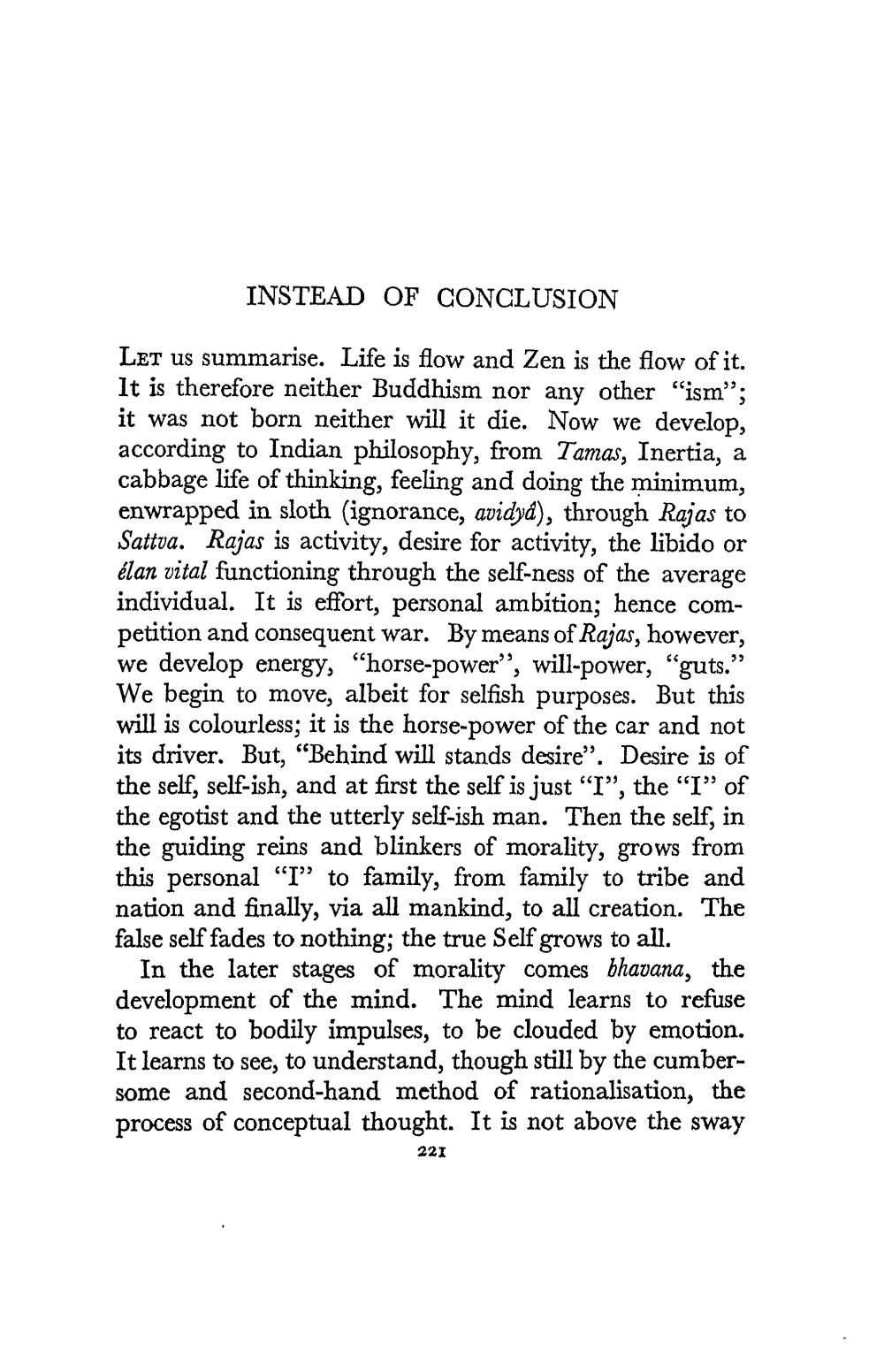________________
INSTEAD OF CONCLUSION
Let us summarise. Life is flow and Zen is the flow of it. It is therefore neither Buddhism nor any other "ism”; it was not born neither will it die. Now we develop, according to Indian philosophy, from Tamas, Inertia, a cabbage life of thinking, feeling and doing the minimum, enwrapped in sloth (ignorance, avidyd), through Rajas to Sattva. Rajas is activity, desire for activity, the libido or élan vital functioning through the self-ness of the average individual. It is effort, personal ambition; hence competition and consequent war. By means of Rajas, however, we develop energy, "horse-power”, will-power, "guts." We begin to move, albeit for selfish purposes. But this will is colourless; it is the horse-power of the car and not its driver. But, "Behind will stands desire”. Desire is of the self, self-ish, and at first the self is just "I", the "I" of the egotist and the utterly self-ish man. Then the self, in the guiding reins and blinkers of morality, grows from this personal "I" to family, from family to tribe and nation and finally, via all mankind, to all creation. The false self fades to nothing; the true Self grows to all.
In the later stages of morality comes bhavana, the development of the mind. The mind learns to refuse to react to bodily impulses, to be clouded by emotion. It learns to see, to understand, though still by the cumbersome and second-hand method of rationalisation, the process of conceptual thought. It is not above the sway
221




